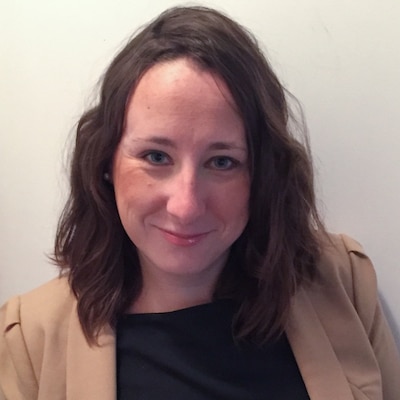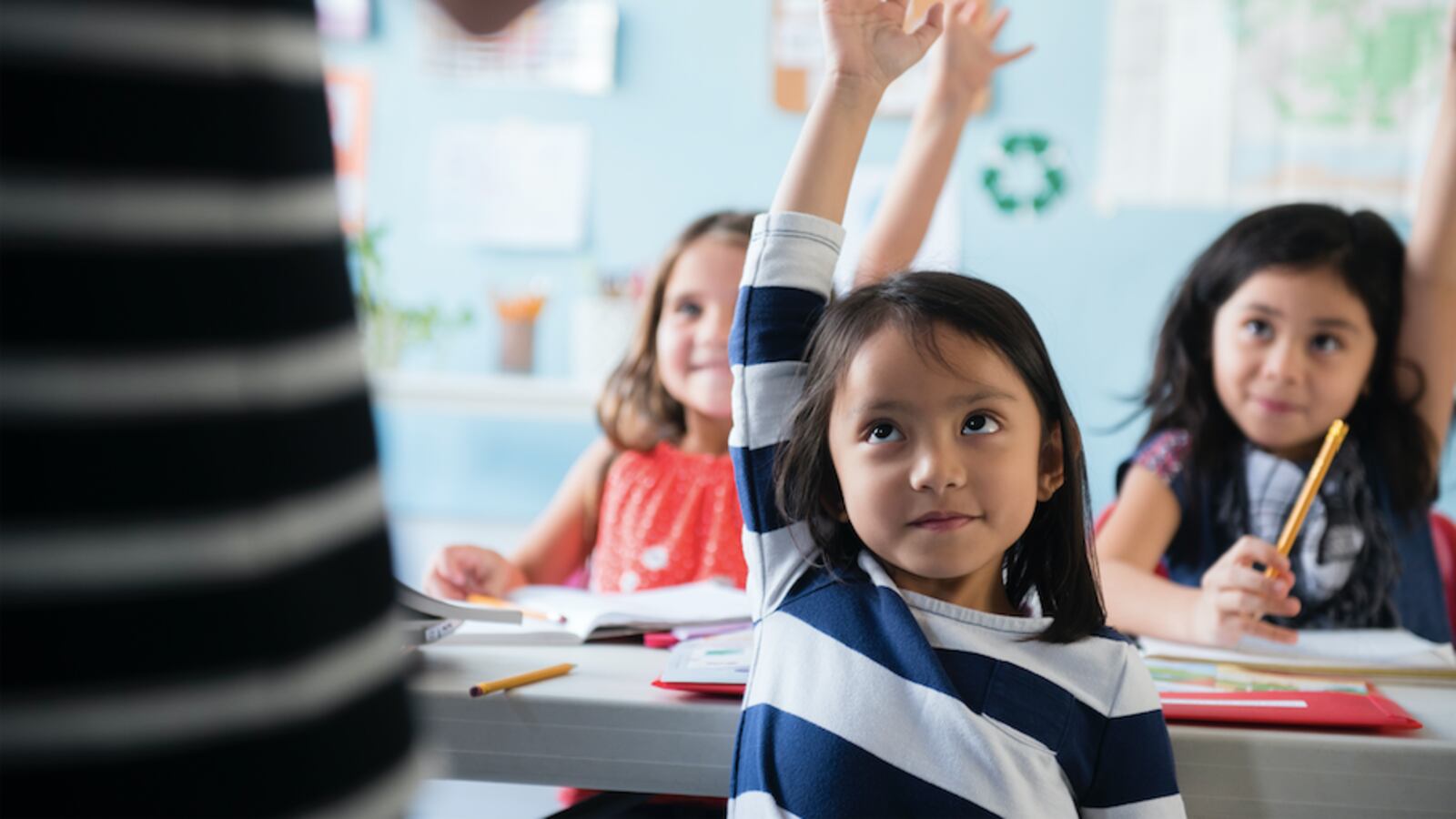When it became clear that hundreds of children — separated from their parents at the border — had been detained in New York City, local officials began requesting details from the federal government.
A week later, many questions remain unresolved, including whether any of those children have enrolled in the city’s public schools. City Hall spokeswoman Jaclyn Rothenberg said in an email that the city is “demanding” more details about those children, adding that the city’s schools are prepared to serve them.
Meghan Dunn — the principal of P.S. 446 in Brownsville, Brooklyn — has deep experience educating students who have experienced trauma. Roughly one in four of her students live in temporary housing, while others are in foster care or have parents who have been incarcerated.
Chalkbeat recently spoke with Dunn about how schools can help students cope with trauma, and how P.S. 446 would approach educating children who had been separated at the border.

This interview had been edited for length and clarity.
What was your reaction when you heard about the Trump administration policy of separating young children from their parents at the border?
When kids don’t have access to loving stable adults in their lives that is one of the biggest traumatic events that can happen in a young child’s life. [It] really has far reaching consequences for being able to set a kid up for success in school and in life when that sense of security is no longer there. And when I think of young kids and how important it is to have your parents with you or tell you that they love you and give you hugs every day and not having that, just has some real long term negative impacts on kids.
Your school in particular has a high proportion of students in temporary housing — what kinds of challenges do those students bring to school?
There’s a lot of bureaucracy that parents have to go through to keep up their housing status, to keep up all their benefits, that involve kids being with their parents. So they miss school for a lot of appointments that are really more around bureaucracy than are around ‘I’m going to the doctor for a checkup.’
So not having that stability of just being in a school is really tough for kids and really affects their ability to be successful. And also just like for our younger kids, when you have to move around a lot that really shapes anyone’s sense of security. And having that sense of security and knowing where I’m going home every night, knowing where my bed is, I know who’s going to be at my house — is really important for kids’ attachment and their ability to […] take on challenges that happen in life — they need this really solid setting.
Do you see similarities between students in temporary housing and kids who have been separated from their parents at the border?
I think it’s the same sense of not having that sense of safety and not having that sense of knowing where your parents are, knowing where your siblings are, or the rest of your family.
And then when kids are coming to school kind of those same predictable behavior problems — they will be trying to assert a sense of control, they’ll be trying to do things that will let them feel like they have power over the situation because they were so powerless for so long. Part of how humans react is we want to have power, we want to feel like we matter even if we can’t verbalize that because we’re only five or six years old, that kids do things to make adults feel like ‘I matter and I want you to see me,’ if those opportunities aren’t there in a more positive way.
How do you make sure vulnerable students are getting emotional support but also a rigorous education that meets your school’s standards?
You have to really prioritize both, which is really heard. [With] high stakes testing, and wanting to make sure everyone is career and college ready, there’s this push to be in the classroom more and kind of have more seat time. But if kids are not ready for that, then there has to be just as high a priority of them going to counseling, going to group therapy and doing things that help them navigate through whatever the crisis is or the trauma that’s going on in their lives, in order for them to be more successful in the long term.
Are there specific strategies you use?
A common tool that we use a lot is that we put together an ‘if-then’ chart for kids. If you do reading time for 15 minutes, then you have the opportunity to have five minutes of coloring time. And kids can kind of put together their ‘if-then’ chart for various parts of the day. It helps kids feel like they both have a sense of control over what’s going on in the classroom […] it’s more of a partnership.
We’ve also done some work around alternative scheduling for kids. Lunch and recess can be really challenging for kids because there’s a lot more kids than there are in a classroom. Using different adults in the school [we] put kids on what we call ‘alternative lunch.’
It’s not a consequence — it’s that we recognize that you are not being successful in the cafeteria, so we want to break this cycle of: you go to lunch, you get in a fight, and you have a consequence. So rather than do that, we have you on a totally different lunch schedule, or you go with a different grade or a different class. It’s about trying to rewire the experience of lunch so it’s not falling into the same traps.
If you learned one of your students was separated from their parents at the border, what are some of the things you would look out for?
The first thing I would think about and try to do is make sure that kid gets connected to an adult in the building. And whether or not that is their teacher or some other adult — that there is an adult who is trying to proactively build bonds and relationships with this kid who most likely struggles with bonds and relationships because of the trauma that they’ve been through. And making sure that every day there is a check in: How are you feeling? Is there anything I should know about?
It sounds silly and really simple and you can’t buy it in a store, but that’s the number one thing that kids need and that sets kids up for success, and they need adults who aren’t going to quit on them even when they’re […] really trying to push that adult away.
If you became aware that in the fall you were getting a student who had been recently been separated and you’re not sure what that students’ previous education was, what are the steps you would take?
I think that in addition to academic [assessments] — we have this family inventory that we do. When we get new kids and also new parents, just asking questions around where are you coming from, are you moving to the city, or moving within the city, what has been your experience with school before? We can get a better sense from kids and parents what their lived experience has been so far and it’s similar to any kind of reading or math assessment that we would do. We prioritize all of them because all of these are ways that we get to know kids and parents.
If you knew you would enroll one of those students, what would you do to prepare?
We have a crisis team that meets whenever any kid or family — whenever any type of crisis happens where we feel like this kid or family needs more support. We have this school-developed protocol where we go through and talk about what the background information is, what kind of supports do we anticipate this kid or family might need.
If we knew we were getting the student, we would probably go through the same process. [If] this student has experienced a lot of food scarcity, we need to make sure they have access to more food because that’s a trigger for this student — really trying to be specific as to what we think those challenges might be and what we can do about it. And getting a lot of people around the table — it’s not a job that one person can do. All the adults have to be on the same page.

